
Gyeonghuigung Palace, one of five grand palaces built during the Joseon Dynasty, served as a secondary royal villa for the king during daily excursions. It was also used as a place of shelter during times of emergency. For over 200 years, ten kings resided at this location.
Construction began in 1617 during the 9th ruling year of King Gwanghaegun of Joseon, who reigned from 1608 to 1623.
Before 1760, the palace was known as Gyeongdeokgung or Seogwol, meaning palace in the west. In 1760, the palace was renamed to Gyeonghuigung.
Sungjeongjeon Hall and Jajeongjeon Hall were used by the king and the royal council for meetings and lectures. During this free time, the king would use these halls for his own personal living room.
A small bridge known as Geumcheongyo can be found crossing the Geumcheon stream near the front entrance of the Seoul Museum Of History.
By the early 1900s, about 100 buildings made up Gyeonghuigung Palace. During the Japanese occupation of Korea most of these buildings were either destroyed or removed to make way for schools for Japanese children.
In the 1990s, reconstruction work was started to restore the decayed royal residence to its former glory. Though many of the gates and halls have since been restored, it still looks very different from its original design and features. In 2002, the area was reopened to the public.
What to see at Gyeonghuigung Palace
Geumcheongyo Bridge
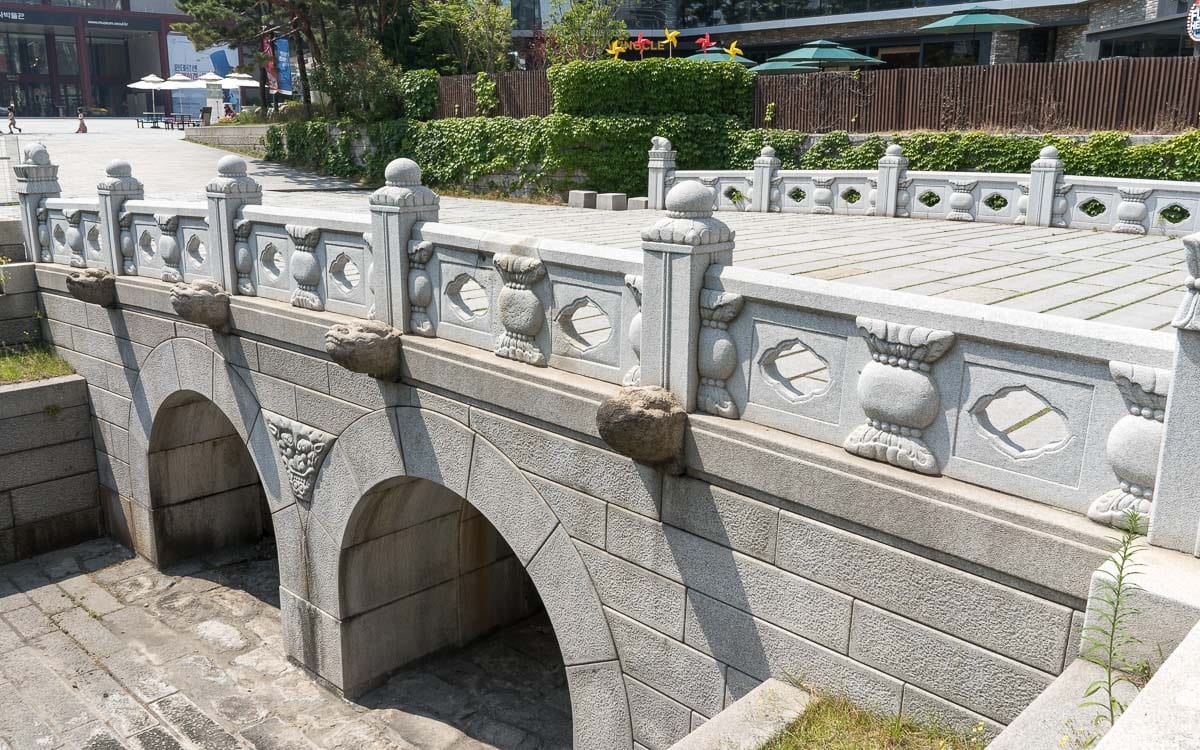
Geumcheongyo Bridge is stone bridge built in 1619 during the reign of Gwanghaegun located across a stream near the entrance to the Seoul Museum Of History. The stream, known as Geumcheon, runs between the bridge and Heunghwamun, the front gate of the palace.
A goblin was engraved into the stone of one of the rainbow shaped posts. It was believed that these goblins and other menacing figures warded off the evil spirits.
During the Japanese occupation, the bridge was completely buried. In 2001, the government of Seoul restored it to its former glory.
There is a bridge by the same name at Deoksugung Palace.
Heunghwamun Gate

Heunghwamun Gate is the front gate of Gyeonghuigung Palace. When originally constructed, it faced east and was located at the current site of the Salvation Army building. In 1932, during the Japanese occupation, the gate was relocated to a shrine known as Bangmunsa who honored Ito Hirobumi.
Ito Hirobumi, who was four times the Prime Minister of Japan, went on to become the first Resident General of Korea (1905-1909) during the occupation of Korea by Japan.
In 1988, Heunghwamun Gate was moved to its current location and designated as Seoul Tangible Cultural Property Number 19.
Jajeongjeon Hall

Jajeongjeon Hall was a hall that was used by the king for meetings with his royal council and also for his own personal use as a living room. In this building, the king held meetings with his subjects and also supervised academic competitions.
When King Sukjong died in 1720, the hall was then used as a binjeon. This was the name of the location in the royal residence where the coffin of a king or queen was held prior to burial. It was also used to temporary hold the eojin, or royal portrait or memorial tablet of the king.
The building was dismantled during the occupation of Korea by the Japanese. After, the government of Korea restored the building to its original design according to Seogwoldoan, which includes sketches of buildings of the western palace.
Jajeongjeon Hall was constructed between 1617 and 1620.
Seoam Rock
Seoam Rock, behind Taeryeongjeon Hall, is a large stone formation well known for its design and for Amcheon, the natural fountain that flows within. Originally, it was known as Wangam which means ‘King’s Rock’ which is why it is believed that King Gwanghaegun built Gyeonghuigung Palace here.
In 1708, during the 34th year of the reign of King Sukjong, the name was changed to Seoam Rock which literally means ‘Propitious Rock’.
King Yeongjo, the twenty first king of the Joseon Dynasty, was known to spend much of his time here while he was at the palace.
A stone tablet, known as Sabangseok, personally engraved with Chinese characters by Sukjong, was once located here but has since been lost and nowhere to be found.
Sungjeongjeon Hall

Sungjeongjeon Hall is the main hall of Gyeonghuigung Palace. At this location, the king would hold many morning meetings and ceremonies. The hall was also used for royal banquets and receptions for important foreign visitors and officials.
Construction began in 1618, during the tenth year of the reign of King Gwanghaegun. He was the 15th king of the Joseon dynasty and ruled from 1608 to 1623. He also ordered the rebuilding of Changdeokgung and other royal residences.
The inauguration ceremonies of King Gyeongjong (20th king of the Joseon Dynasty from 1720-1724), King Jeongjo (22th king of the Joseon Dynasty from 1776-1800), and King Heonjong (24th king of the Joseon Dynasty from 1834-1849) were held here.
Taeryeongjeon Hall
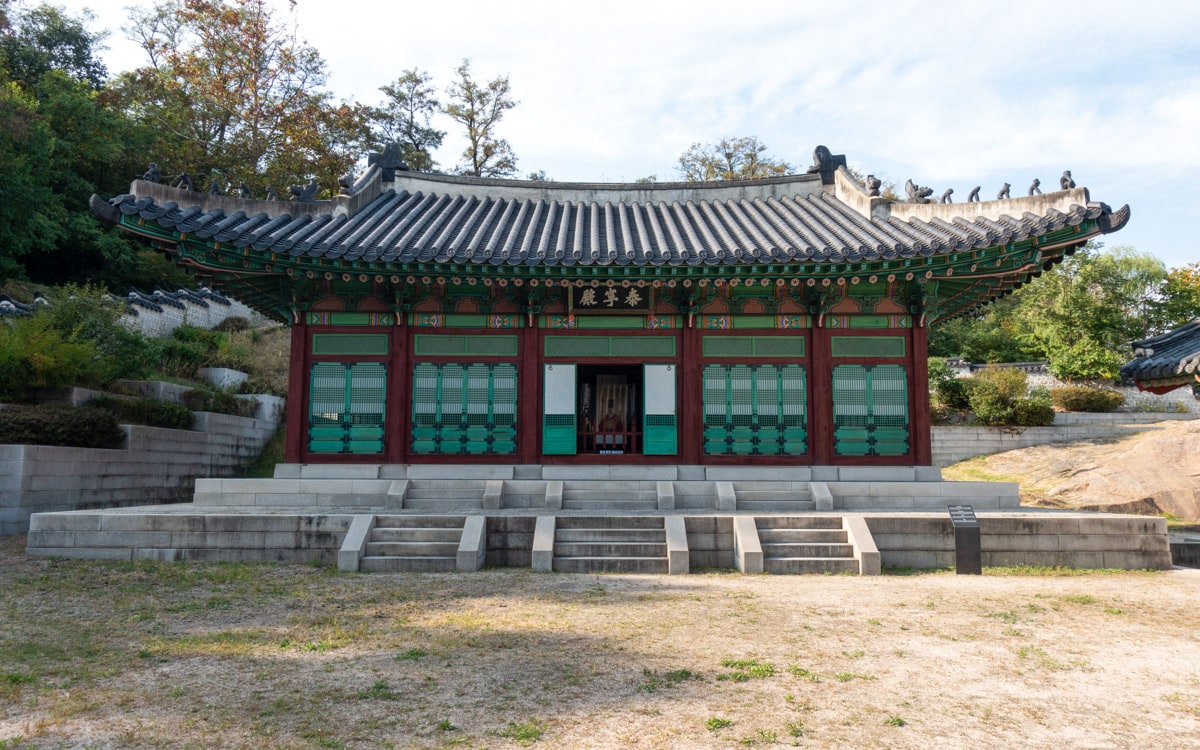
Taeryeongjeon Hall is located in a back corner of Gyeonghuigung Palace. It contains the portrait of King Yeongjo who ruled from 1724 to his death in 1776. Originally, this building had no specific purpose or use.
In 1744, during the 20th year of the reign of Yeongjo, it was renovated to display his own portrait. This is unique do to the fact that Yeongjo dedicated his own portrait during his reign. This is unlike other halls such as Seonwonjeon Hall at Changdeokgung Palace which kept the portraits of past kings.
The building was removed during the Japanese occupation. In 2000, it was finally restored and now features five sections on the front side and two sections on the sides. The tablet which hangs at the front was inspired by Han Seok-bong, a calligrapher during the Joseon Dynasty.
Gyeonghuigung Palace Information
Hours
Weekdays: 9:00-18:00
Weekends: 10:00-18:00
Admission
Free
Address
45 Saemunan-ro, Jongno-gu, Seoul, South Korea
GPS Coordinates: 37.57109, 126.96851
How to Get Here
Take Subway Line 5 to Seodaemun Station (Exit 4).
After exiting, continue straight and make a right at the Naeil Newspaper Office.
Continue for 10 minutes.
Map
Additional Resources
Viator by TripAdvisor
Viator is a popular online platform that helps travelers book tours, activities, and unique experiences worldwide, including in Seoul. It connects users with a wide selection of options – from sightseeing tours to cultural events and outdoor adventures – all offered by local providers.
Klook
Klook offers discounted tickets and reservations for various attractions and services in Seoul, from theme parks and museums to tours and transportation options.
Rakuten
Save money while exploring Seoul with Rakuten's cashback program. Book your hotels or other services through Rakuten and enjoy cashback rewards and exclusive deals.
If you sign up using the link below, you could earn $30 cashback on your first purchase over $30.
Book Recommendations
For an immersive guide to Seoul, many travelers choose to bring a book along. Fodor's Seoul, for example, offers detailed recommendations on sights, restaurants, maps, and travel tips.
Nearby Sights
Seoul Museum of History

Opened in 1985, the Seoul Museum of History proudly preserves and showcases the history, tradition, and culture of this great country. The museum is located adjacent to Gyeonghuigung Palace. On May 5, 2002, the museum reopened after renovations to the thrill of the citizens of Korea. Everything you wanted to know about the history of Seoul can be found at this interesting free museum.
Former Russian Legation
This Renaissance style white building is the former Russian Legation building. This building, similar to an embassy, once housed offices of diplomats. A legation is lower in status of that of an embassy. The structure was built in 1890 during the 27th year of the reign of King Gojong. The structure was designed by A.
Sajik Park
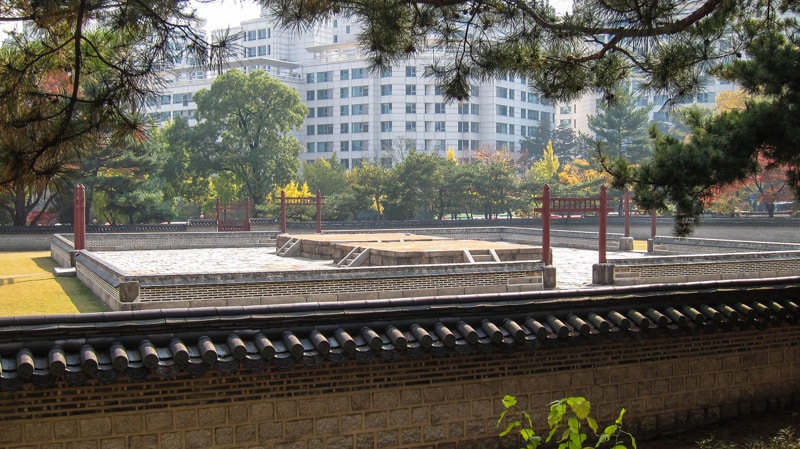
Sajik Park is a park located near the Central Government Complex on the hills of Mt. Inwang. Rites to the deities of earth and grains are performed here. It was here where sacrifices and ceremonies were performed in honor of the deities of the earth and the deities of the grains.
Yeongcheon Market
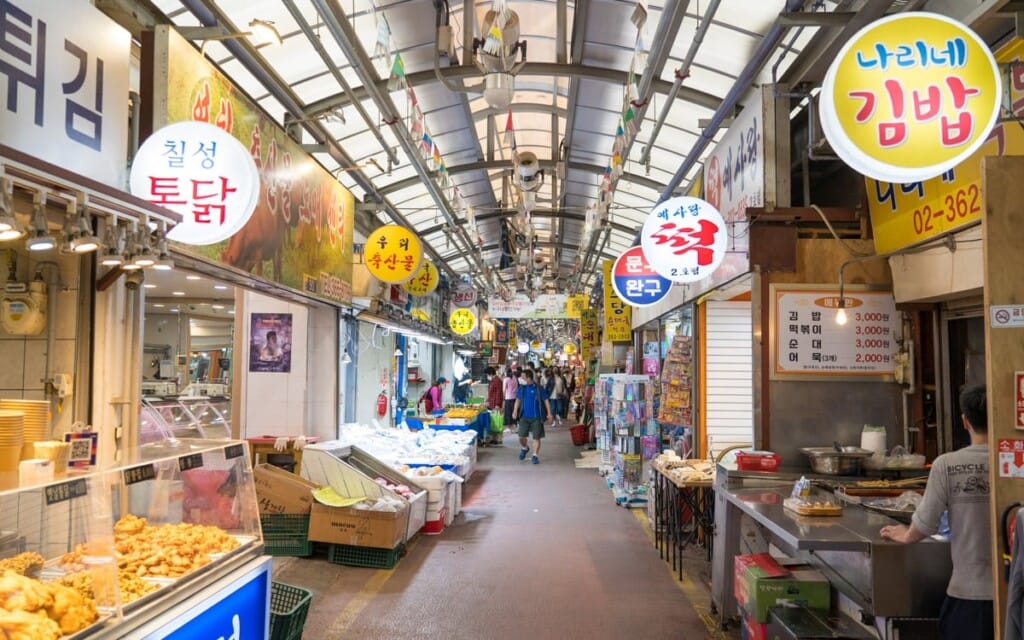
Yeongcheon Market is a small traditional market located between Seodaemun Station and Dongnimmun Station in Seodaemun-gu. Established in the 1960s, this single alley covered market with about 130 stores is popular for its street foods, fresh produce, fruits, meats, seafood, toys, shoes, and more. Although it is not large in size, Yeongcheon Market features a wide variety of items sold at affordable prices. As you walk down the 250 meter (820 foot) alley, you might notice how many of the stores sell similar items whether it's vegetables, meat, garlic, seafood, dried peppers, or spices.
Chungdong First Methodist Church

Chungdong First Methodist Church, established in 1897 by American missionary Henry Appenzeller, is the first Protestant church of Korea. The beautiful red brick church is located just down the road from Deoksugung Palace and Seoul Plaza. Appenzeller, along with his wife, arrived in Chemulpo, Korea on April 5, 1885. At this time, Seoul was in a political and religious struggle.
Statue of Admiral Yi Sun-sin
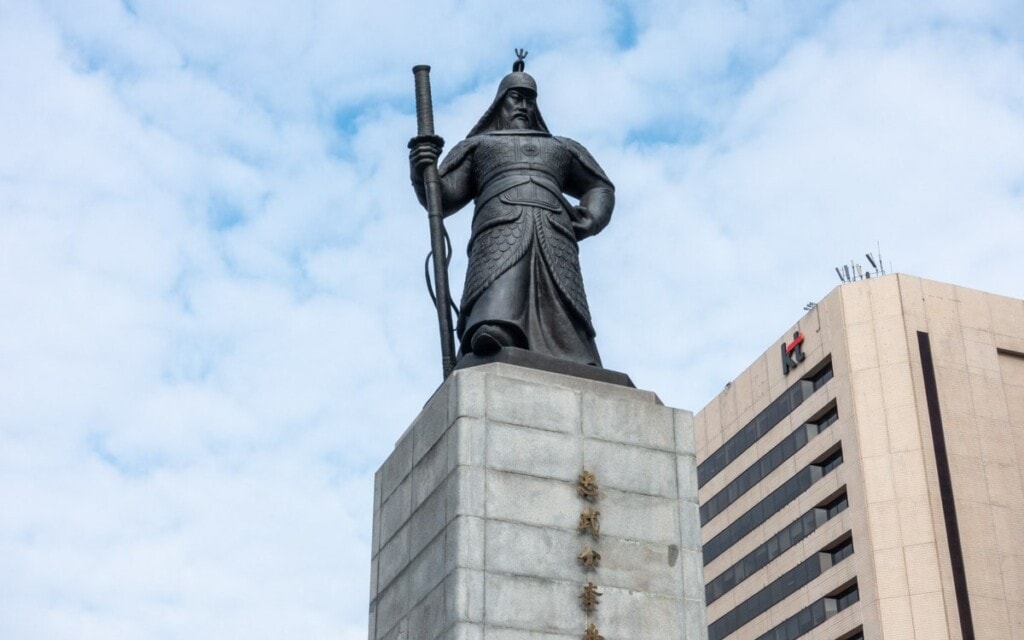
Walking south of the statue of the great King Sejong the Great brings you to the towering statue of Admiral Yi Sun-sin, also known as Yi Sunshin. The statue is officially named 12.23 Fountain in honor of the 23 battles he fought using 12 warships. Yi, born on April 28, 1545, is best known for his military achievements during the Imjin War.
Last Updated on Mar 26, 2025